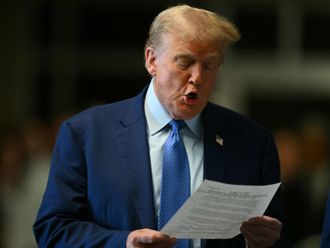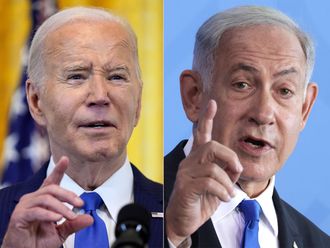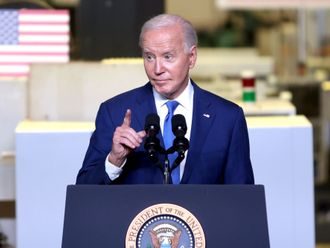WASHINGTON: President Barack Obama on Friday moved to vastly expand a marine sanctuary northwest of the main Hawaiian Islands, creating the world’s largest protected marine area as he seeks to cement his environmental legacy in his last months in office.
Obama will travel next week to Midway Atoll, a remote spit of land within the Papahanaumokuakea Marine National Monument, to recognise the designation and highlight the importance of protecting pristine lands and waters as the perils of climate change intensify.
The move, which will more than quadruple the size of the refuge and has been championed by conservationists, scientists and native Hawaiians, is the latest example of Obama’s expansive exercise of executive power to preserve public lands and waters.
“This act — to build resilience in our oceans, and sustain the diversity and productivity of sea life — could usher in a new century of conservation for our most special, and fragile, ocean areas,” said Sarah Chasis, director of the oceans program at the Natural Resources Defense Council.
Using the 110-year-old Antiquities Act, which was signed by President Theodore Roosevelt, Obama has protected hundreds of millions of acres in places of ecological, historical or cultural significance — more than any other American president. In 2014, he also greatly expanded the Pacific Remote Islands Marine National Monument, south and west of Hawaii. But he has often drawn criticism from Republicans for acting unilaterally.
Created by President George W. Bush in 2006, the Papahanaumokuakea monument surrounds the uninhabited Northwestern Hawaiian Islands and is home to an estimated 7,000 marine and terrestrial species, a quarter of which are found nowhere else on Earth.
“Papahanaumokuakea inspired an international movement to safeguard large areas of ocean and create the world’s first generation of great parks in the sea,” Joshua S. Reichert, who oversees strategy for the Pew Charitable Trusts’ Global Ocean Legacy project. “By expanding the monument, President Obama has increased protections for one of the most biologically and culturally significant places on the planet.”
The monument includes millions of tropical sea birds, endangered whales and sea turtles, and black coral, considered the longest-living marine species, according to information provided by the administration. Obama’s action will expand the size of the monument, which now encompasses a little less than 140,000 square miles, to more than 580,000.
The area also carries substantial cultural significance as a sacred place to native Hawaiians, and historical importance as the site of the Battle of Midway, a decisive Allied victory that was a turning point in World War II.
Within the expanded area of the monument, commercial fishing and mineral extraction such as deep sea mining will be prohibited, the White House said, but recreational fishing and subsistence fishing by native Hawaiians will be allowed by permit, along with scientific research.
The administration also plans to give the Office of Hawaiian Affairs, which represents indigenous Hawaiians, a role in managing the monument.
The administration said Obama’s decision to expand the marine monument came in response to a proposal by Sen. Brian Schatz, D-Hawaii, and native leaders there.
“This is one of the most important actions an American president has ever taken for the health of the oceans,” Schatz said Friday. He said that expanding the monument would replenish stocks of tuna, promote biodiversity and fight climate change.
— New York Times News Service












